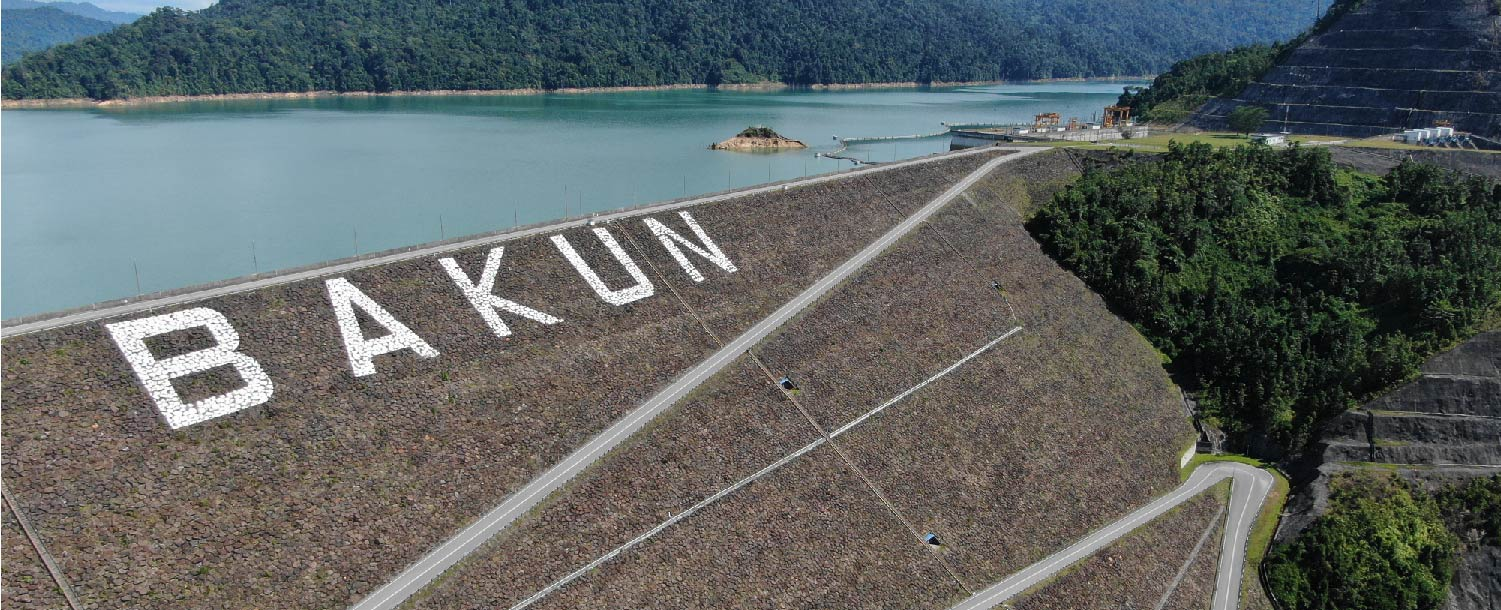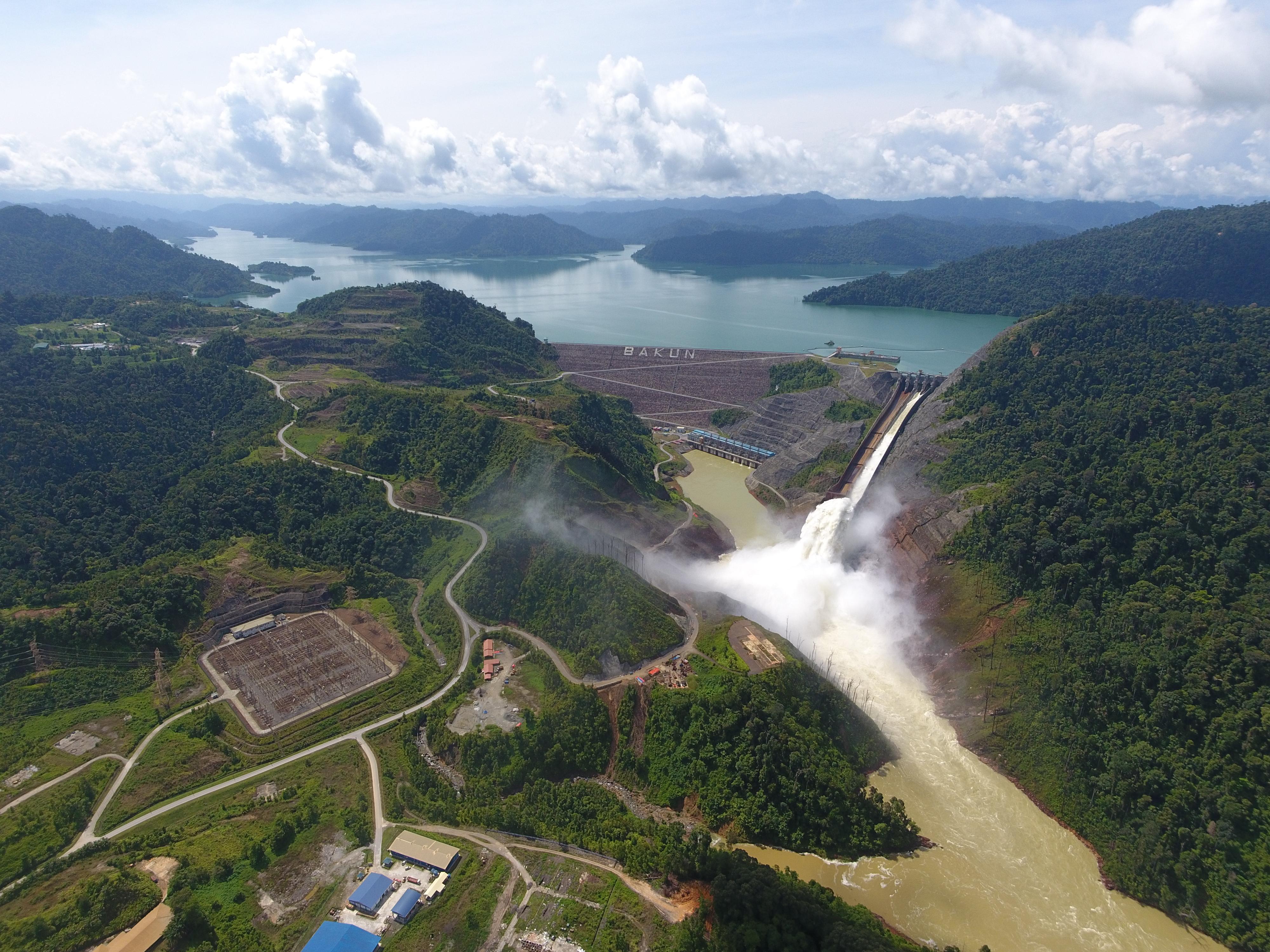

BAKUN HYDROELECTRIC PLANT
Research and Development
1. Hydrogen Sulfide (H2S) Research Programme
Similar to GHG production, H2S can also be produced when a forested area is inundated for the formation of a reservoir. The presence of H2S in the reservoir may eventually lead to microbial-induced corrosion within submerged water systems which is commonly observed in other industries such as wastewater treatment or oil and gas industries where sulfides are present. However, H2S-related corrosion is not well studied in the context of hydropower reservoirs, particularly in tropical regions like ours. Therefore, a thorough scientific understanding of corrosion sciences and the impacts of H2S in hydropower plants will be essential for the formulation of effective mitigation measures.


A picture of Bakun HEP taken in 2014
2. Greenhouse Gas (GHG) Research Programme
In line with Sarawak Energy’s sustainability efforts, a series of the works were initiated and are still ongoing to assess the potential impacts of Sarawak Energy’s hydropower reservoirs as a current sink or source of GHG. This initiative is led by the GHG & H2S unit of the Research & Development Department.
In 2020, while travel was restricted due to the COVID-19 pandemic, several initiatives resumed as usual. One such initiative conducted was the internal usage of the GHG Reservoir Tool (G-res Tool), a web-based tool developed by the International Hydropower Association (IHA) in collaboration with the UNESCO Chair for Global Environmental Change for carbon footprint reporting of a reservoir. To date, the team has submitted results for the official Hydropower Sustainability Assessment Protocol (HSAP) assessment of Baleh HEP on the topic of Climate Change Mitigation and Resilience in the implementation stage and is in the process of results validation. This independent validation process will be performed by the IHA G-res Team, for verification of the correct usage of the tool and data input for the estimation process. The GHG & H2S team has also done in-house estimation of GHG emissions for Bakun and Murum hydropower reservoirs as a form of benchmark for further improvement of the model.
Apart from the results obtained from the G-res Tool, the team also continued with internal measurements according to the established protocol by UNESCO/IHA GHG Measurement Guidelines for Freshwater Reservoirs (2010). The team has since conducted 20 and 12 post-impoundment field campaigns for Bakun and Murum respectively (one campaign for each reservoir in 2020). Three journal papers were published in 2020 and are publicly available as a result of the collaborative study conducted at Batang Ai reservoir in two phases from 2014 – 2015 (Phase I) and 2016 – 2019 (Phase II) with Université du Québec à Montréal (UQAM), Canada as listed below:
- Reis, PCJ et al. 2020, ‘Rapid shifts in methanotrophic bacterial communities mitigate methane emissions from a tropical hydropower reservoir and its downstream river’, Science of the Total Environment, vol. 748, no. 141374.
- Soued, C & Prairie, YT 2020, ‘The carbon footprint of a Malaysian tropical reservoir: measured versus modelled estimates highlight the underestimated key role of downstream processes’, Biogeosciences, vol. 17, no. 2, pp. 515 – 527.
- Soued, C & Prairie, YT 2020, ‘Sources and processes sustaining surface CO2 and CH4 fluxes in a tropical reservoir: the importance of water column metabolism’, Biogeosciences Discuss., https://doi.org/10.5194/bg-2020-258, in review.
In line with the Sarawak Energy Research Blueprint for Hydro Environmental Sciences that has been laid out for 2019 - 2030, the key research scopes identified within the blueprint under the GHG Research Programme, are targeted at improving our understanding of the biogeochemical cycles that occur within the hydropower reservoir to support further mitigation strategies. Future external collaborations are also in planning as part of the company’s initiatives on climate change mitigation.
The goal of the GHG Research Programme is to ensure that the development of management and mitigation measures specific to the GHG footprint of our hydropower reservoirs are informed and supported by scientific evidence. This is to ensure that in Sarawak Energy’s vision of being a regional expert in hydropower utility is being developed by international sustainable standards and is in line with the State’s agenda of environmental sustainability whilst promoting the wider use of renewable energy.
Note: The reservoir area and installed capacity values are based on the official values from SEIA/our company website
|